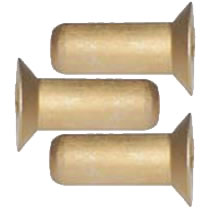
If you’re planning to use solid rivets, you may want to invest in a rivet compression tool. Solid rivets, of course, are mechanical fasteners consisting of a smooth cylindrical shank and a round head. They are commonly used in applications where strength and reliability is needed, such as structural engineering and aerospace engineering. Unlike threaded fasteners, solid rivets typically won’t loosen over time.
While you can use a screwdriver to install threaded fasteners, however, you may need a compression tool to install solid rivets. Solid rivets don’t have a drive type, so they don’t support a Phillips screwdriver or any other type of screwdriver. What is a rivet compression tool exactly, and how does it work?
The Basics of a Rivet Compression Tool
A rivet compression tool is a device that’s designed to compress and deform solid rivets. It offers a quick and easy way to install solid rivets. You don’t have to use a hammer to manually deform the ends of a solid rivet. Instead, you can use a rivet compression tool.
Some of the different types of rivet compression tools include the following:
- Mechanical: The least expensive type, mechanical rivet compression tools rely on manual action. You’ll have to physically squeeze the trigger to engage a mechanical rivet compression.
- Pneumatic: Pneumatic rivet compression tools leverage pressurized air. They are used in the same applications as their mechanical counterparts, but they require less physical effort to use.
- Hydraulic: There are also hydraulic rivet compression tools. Like with other hydraulic tools and devices, they use pressurized fluid.
How Rivet Compression Tool Works
Whether it’s a mechanical, pneumatic or hydraulic rivet compression tool, it will likely use a similar method of operation. They are known as “rivet compression tools” because they compress rivets. Compression causes solid rivets to deform so that they hold the parts with which they are used together.
To install a solid rivet, you’ll typically need to drill or cut a hole through the respective parts. You can then insert the solid rivet shank-side first through the hole. Now it’s time to use the rivet compression tool.
While most rivet compression tools use a similar method of operation, some of them may vary. Nonetheless, you can place a rivet compression tool around the solid rivet. Upon pulling the trigger, the tool will compress the head and tail (the back end of the shank). The tail will then flatten, thereby holding the solid rivet in place.
In Conclusion
1



